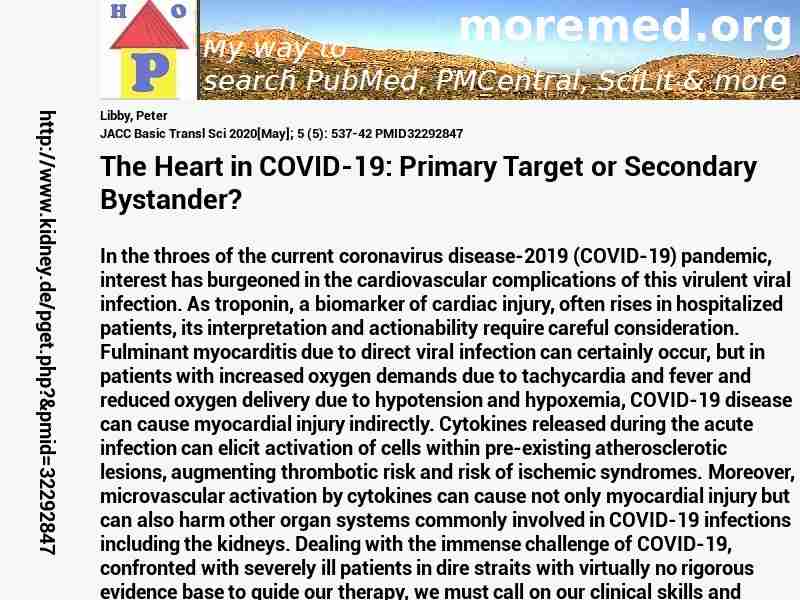
|
10.1016/j.jacbts.2020.04.001
http://scihub22266oqcxt.onion/10.1016/j.jacbts.2020.04.001

32292847!7151324!32292847
 free free
 free free
 free free
Warning: file_get_contents(https://eutils.ncbi.nlm.nih.gov/entrez/eutils/elink.fcgi?dbfrom=pubmed&id=32292847&cmd=llinks): Failed to open stream: HTTP request failed! HTTP/1.1 429 Too Many Requests
in C:\Inetpub\vhosts\kidney.de\httpdocs\pget.php on line 215
|  
Deprecated: Implicit conversion from float 209.6 to int loses precision in C:\Inetpub\vhosts\kidney.de\httpdocs\pget.php on line 534
Warning: imagejpeg(C:\Inetpub\vhosts\kidney.de\httpdocs\phplern\32292847.jpg): Failed to open stream: No such file or directory in C:\Inetpub\vhosts\kidney.de\httpdocs\pget.php on line 117
 JACC+Basic+Transl+Sci 2020 ; 5 (5): 537-542 JACC+Basic+Transl+Sci 2020 ; 5 (5): 537-542
Nephropedia Template TP
gab.com Text
Twit Text FOAVip
Twit Text #
English Wikipedia
|
The Heart in COVID-19: Primary Target or Secondary Bystander? #MMPMID32292847Libby PJACC Basic Transl Sci 2020[May]; 5 (5): 537-542 PMID32292847show ga
In the throes of the current coronavirus disease-2019 (COVID-19) pandemic, interest has burgeoned in the cardiovascular complications of this virulent viral infection. As troponin, a biomarker of cardiac injury, often rises in hospitalized patients, its interpretation and actionability require careful consideration. Fulminant myocarditis due to direct viral infection can certainly occur, but in patients with increased oxygen demands due to tachycardia and fever and reduced oxygen delivery due to hypotension and hypoxemia, COVID-19 disease can cause myocardial injury indirectly. Cytokines released during the acute infection can elicit activation of cells within pre-existing atherosclerotic lesions, augmenting thrombotic risk and risk of ischemic syndromes. Moreover, microvascular activation by cytokines can cause not only myocardial injury but can also harm other organ systems commonly involved in COVID-19 infections including the kidneys. Dealing with the immense challenge of COVID-19, confronted with severely ill patients in dire straits with virtually no rigorous evidence base to guide our therapy, we must call on our clinical skills and judgment. These touchstones can help guide us in selecting patients who might benefit from the advanced imaging and invasive procedures that present enormous logistical challenges in the current context. Lacking a robust evidence base, pathophysiologic reasoning can help guide our choices of therapy for individual clinical scenarios. We must exercise caution and extreme humility, as often plausible interventions fail when tested rigorously. But act today we must, and understanding the multiplicity of mechanisms of myocardial injury in COVID-19 infection will help us meet our mission unsupported by the comfort of strong data.�
  
DeepDyve
Pubget Overpricing | 
|